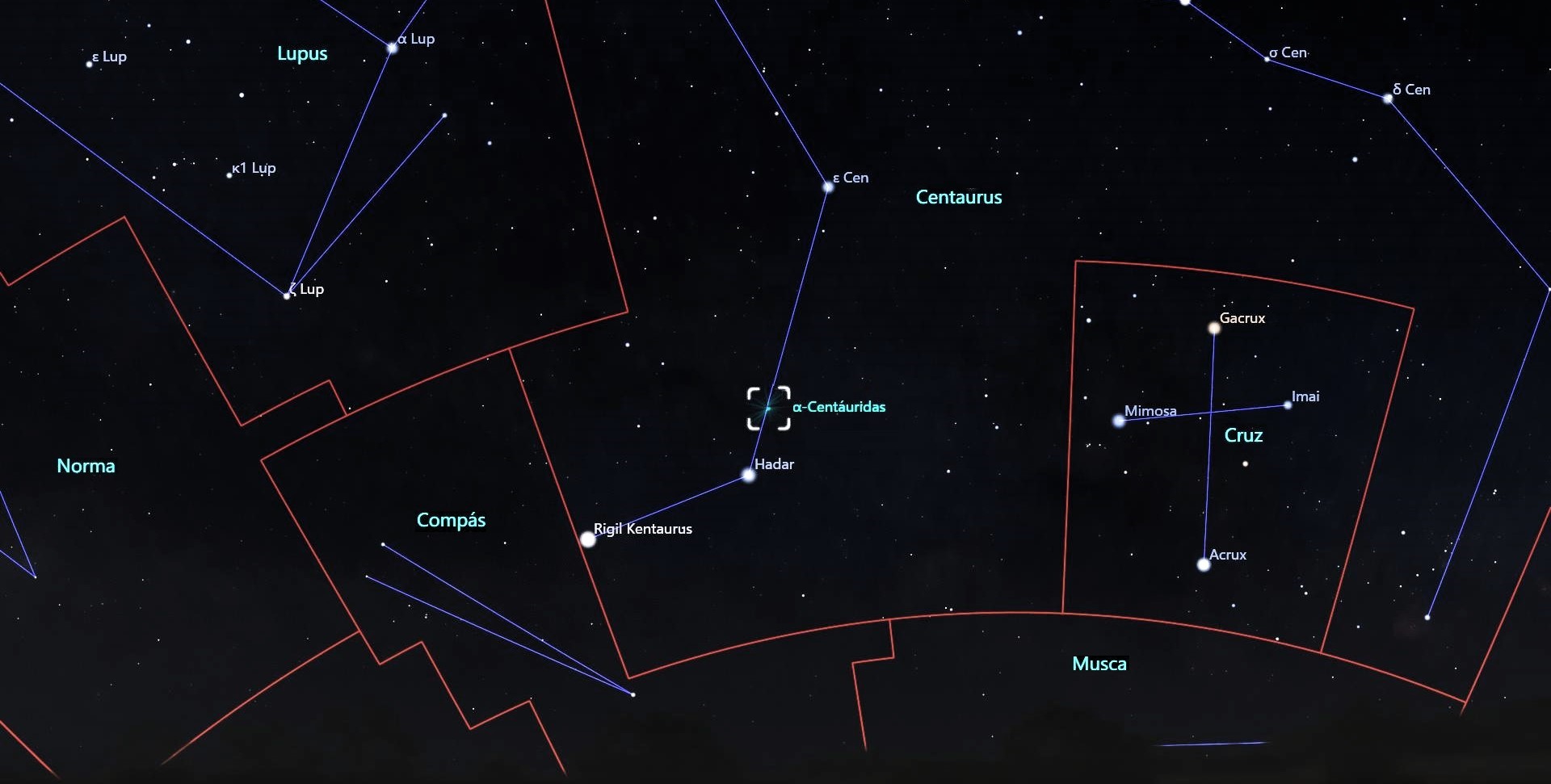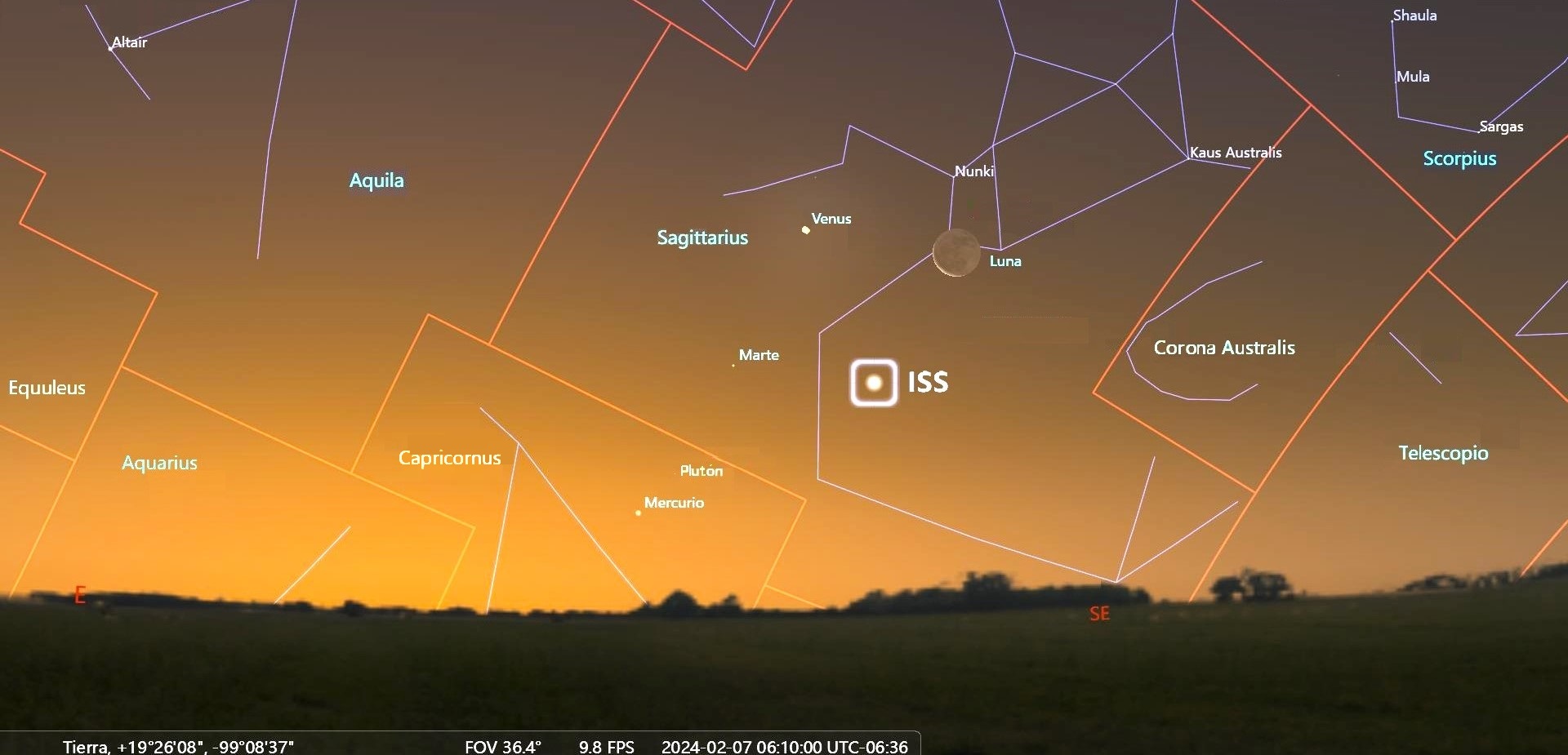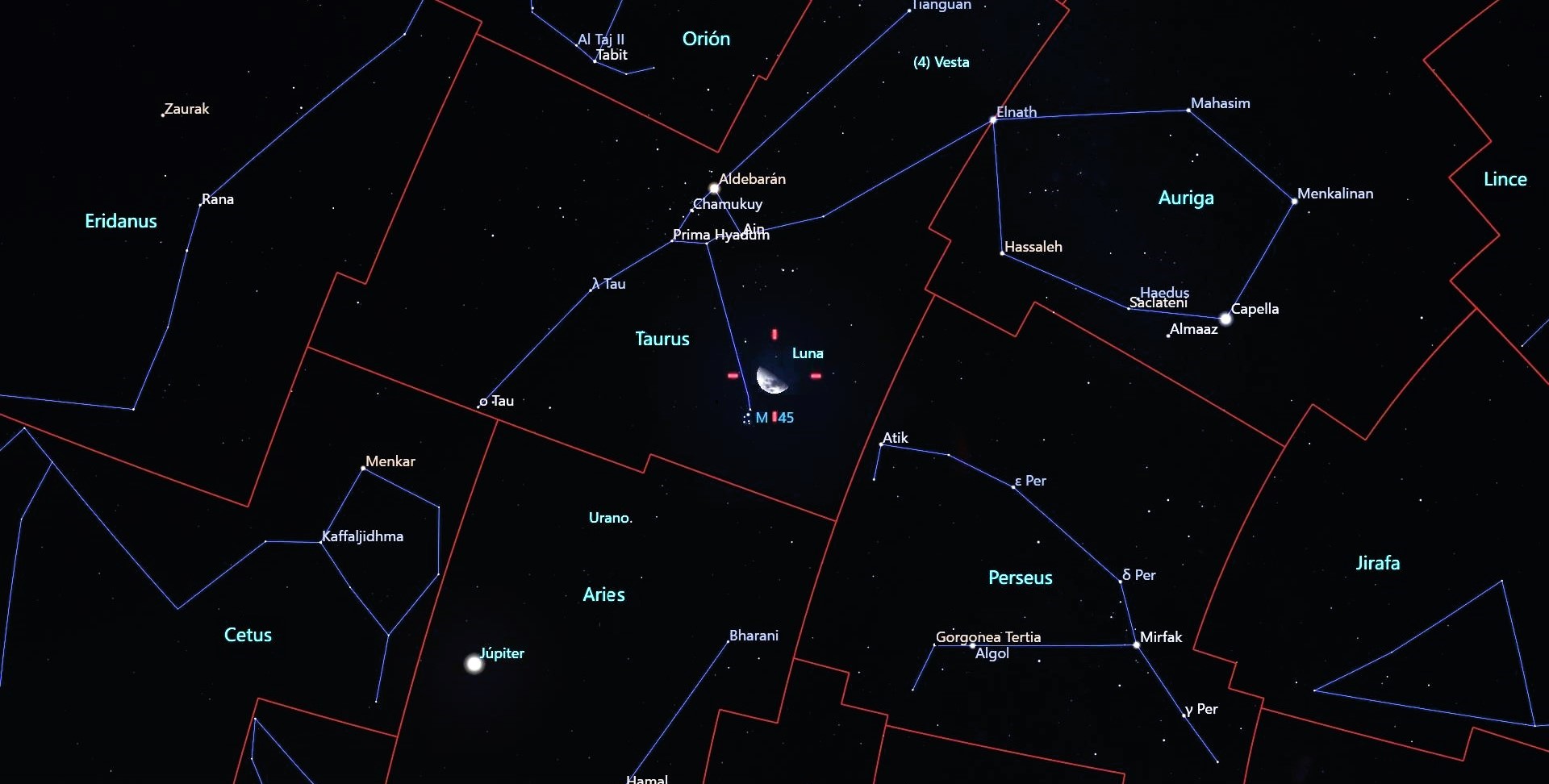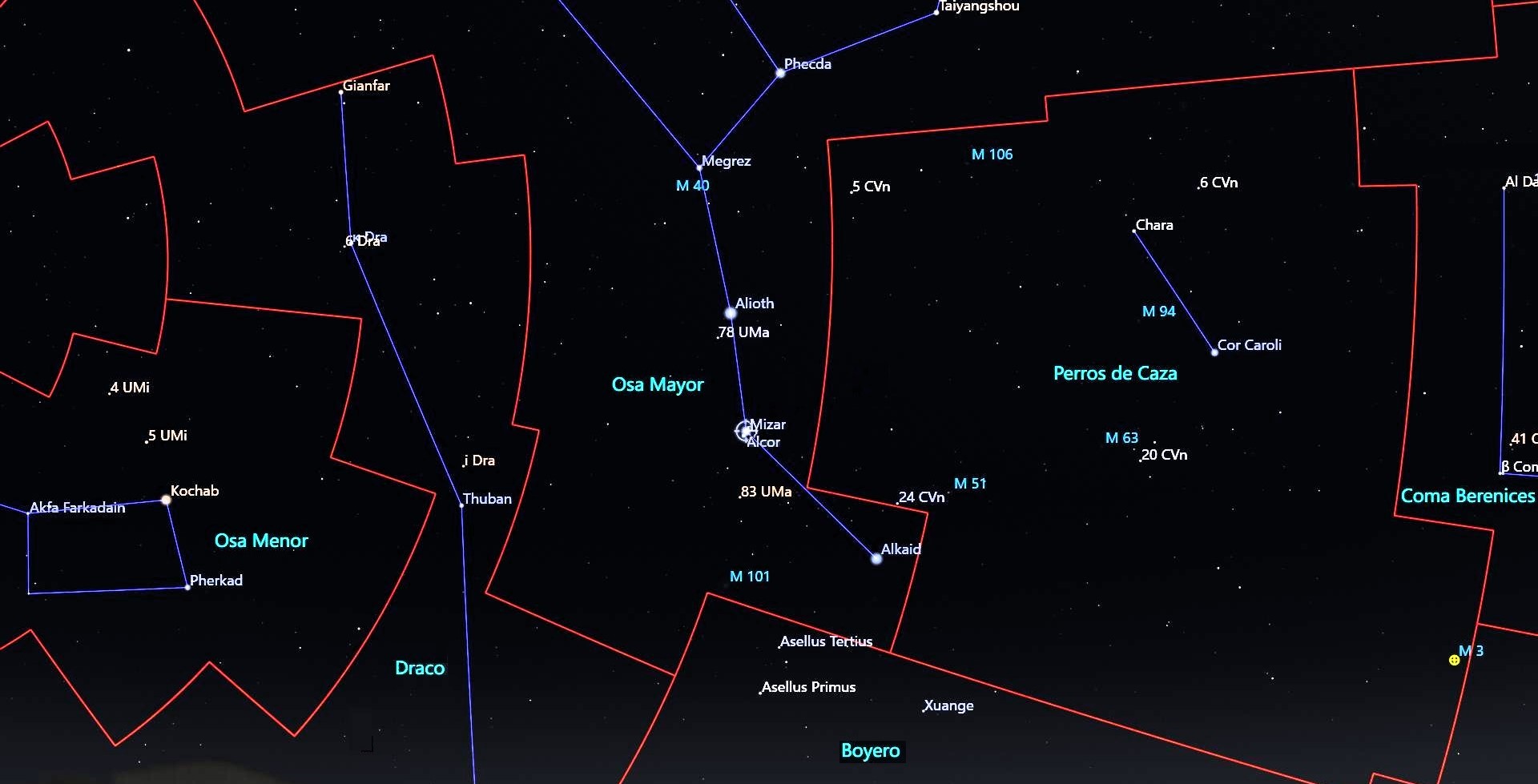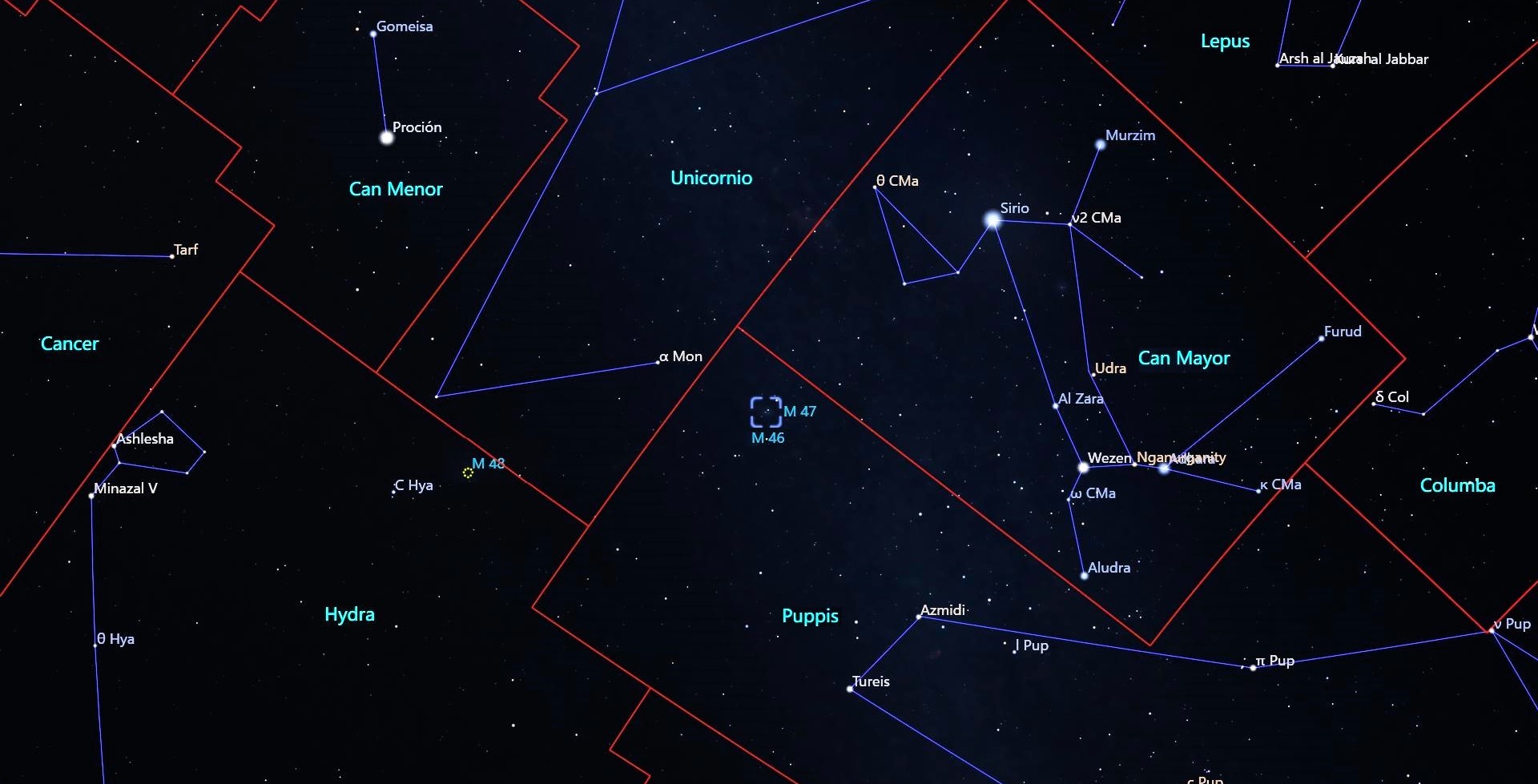Astronomical events of February 2024
In the month of February, in addition to highlighting how important women and girls are in science, we will have reasons to raise our gaze to the night sky, hoping, for example, to see meteorites or the so-called shooting stars. Between February 5 and 8, the Moon and some planets invite us to get up early and appreciate their approaches; The Moon will also have a close approach with the Pleiades, at sunset on the 16th. We will learn a dramatic story about bears and, as a challenge of the month, we will try to locate the elusive cluster M47. Of course, the Moon and its different phases cannot be missed.
International Day of Women and Girls in Science
With the intention of achieving recognition of the formidable work that women perform in scientific life, in 2015, the United Nations General Assembly unanimously approved February 11 as International Women's Day and the Girl in Science.
There is no doubt that a great promoter of women entering scientific life was Dr. Paris Pismish Acem. Of Armenian origin, born in Turkey, Dr. Paris was one of the first Turkish women to attend Istanbul University, breaking paradigms. By 1938, she convinced her parents to travel to the United States, where she obtained a scholarship to study astronomy at Harvard University; There she participates in her first summer school and she meets great astronomers of the time, such as Harlow Shapley, Cecilia Payne-Gaposchkin and Bart Bok. In 1942, the National Astrophysical Observatory of Tonantzintla (OANTon) was inaugurated and an international astronomy conference was held, to which Dr. Pismish was invited. This marked her life and promoted modern astronomy in Mexico. At the invitation of the director of the OANTon, Luis Enrique Erro Soler, Dr. Paris worked at this site from 1943 to 1946, later leaving the country and returning in 1948, to settle in Mexico City and become a professor at the National Autonomous University of Mexico (UNAM), where she worked until her death in 1999, leaving a deep mark of how valuable women are to science.

With any luck, we'll see some fleeting
Continuing in the regions of the southern celestial hemisphere, we have the ?-Centaurid meteor shower. These will be active between January 28 and February 21, with their maximum on February 8. The maximum observable rate is variable, with at least 6 meteors per hour. The radiant is located in the direction of the southern constellation of Centaurus. The object responsible for the rain has not been completely identified, but we know that the best time to observe glimpses will be at dawn on the 8th, towards the southern part of the celestial sphere. To observe this event we need some conditions, namely: having a dark southern horizon, free of obstacles and simply looking up at that region of the sky.
Only for early risers
For early risers, between February 5 and 8, we will have the Moon visiting some planets: Venus, Mars, Pluto and Mercury, framing a postcard-perfect sunrise; With some luck and considering some correction of the anniversary, the International Space Station (ISS) will appear before our sight, south of the planet Mars, on February 7, at 06 hours and 10 minutes; Yes, we must have a clear horizon.
The field of binoculars or telescopes is too small to include all objects in the field of view, so it is advisable to enjoy the image with the naked eye. Binoculars or telescopes can be used to focus on objects individually, however, extreme caution must be taken given the proximity of the Sun.
The Moon visiting family
The Pleiades or Seven Sisters open cluster has been one of the clusters observed since ancient times; Charles Messier, in 1769, included it in his catalog with the number 45. M45 is an open star cluster, visible to the naked eye in the night sky in the constellation of Taurus, it consists of several hundred stars, but the brightest are 7: Alcyone, Electra, Maia, Taygeta and Merope, Atlas (the father) and Pleione (the mother), and two other weak sisters Anterope and Caeleno. Members of an open star cluster are linked through the force of gravity, originate from the same molecular cloud, and are believed to be 100 million years old. At sunset on February 16, the Moon and M45 will approach each other, passing just 31 minutes of arc from each other, in the direction of the constellation of Taurus.
Multiple star system
Mythology tells us that Callisto was a beautiful hunter who served Artemis, goddess of the hunt. Zeus really liked Callisto, so he transformed into a human and fell in love with her. As a result of her love affair, Arcas was born. When Zeus' wife Hera found out about her, she became very angry with her and Zeus, to protect Callisto, turned her into a bear. As time passed, Hera learned about Arcas and asked Artemis to teach him how to hunt, making him a great hunter. On Hera's instructions, one day, Artemis took Arcas to the forest to hunt a ferocious bear. Her mother was about to shoot her when Zeus appeared, and to save Callisto, she transformed her into the constellation of the Big Dipper and Arcas into the constellation of Ursa Minor.
In the constellation of the Big Dipper we find the multiple star system, formed by Mizar and Alcor, located at a distance of 78.1 and 81.1 light years, respectively. Mizar has a visual magnitude of 2.2 and Alcor 3.9, separated 11 minutes and 48 seconds of arc in the sky. The first notes that Mizar is a double system date back to 1616 with Benedetto Castelli, although it was formally discovered by Giovanni Battista, in 1650. By 1889, astronomer Edward Charles Pickering discovered that the star Mizar has, in turn, a companion that called Mizar B and more recently, in 2009, Project 1640 astronomers observed a faint companion to Alcor that they called Alcor B, with other possible members, generating the multiple system. The Mizar and Alcor system is highly recommended for new observers since it is easy to locate with the naked eye, but it will always be better to use binoculars or a small telescope to clearly distinguish both components.
A cluster with an elusive past
The cluster M47 was first observed by Giovanni Batista Hodierna in 1654, who described it as a “nebulosity between two dogs”, no one detected it again until Messier rediscovered it in 1771, but making an error in its coordinates, so again M47 was lost. John Herschel introduced it to the catalog of globular clusters, although there was no object, until finally William Herschel, in 1785, “rediscovered” it and it was fully identified as an open cluster.
Due to its great brightness (4.4 magnitudes) it can be seen with the naked eye, with good sky conditions, as a weak nebulosity, composed of about 50 bright stars that cover an area of 12 light years in diameter and at a distance of approximately 1,600 light years. . Its age has been estimated at 78 million years.
The open cluster M47 (NGC 2422) in the constellation Puppis (Popa) will be well positioned for observation most of the night, towards the southeastern part of the celestial sphere. It will be enough to have binoculars or a small telescope to identify it.
Phases of the Moon (Central Mexico time).

Watch the video of the month: https://youtu.be/aimbkHp-LcE?si=yJPpg8mdNan8xyX5
Contacts:
Dr. Agustín Márquez Limón (amarquez@inaoep.mx)
Coordinación de Astrofísica-INAOE
M.C. Tania Martínez
astronomaplanetariokayok@gmail.com
Red de Planetarios del Estado de Quintana Roo
Dr. Raúl Mújica García (rmujica@inaoep.mx)
Coordinación de Astrofísica-INAOE y Noche de las Estrellas
Luis Enrique Erro # 1, Tonantzintla, Puebla, México, Código Postal 72840, Tel: (222) 266.31.00, difusion@inaoep.mx
This work is licensed under a Creative Commons Attribution-NonCommercial-NoDerivs 2.5 Mexico License.


